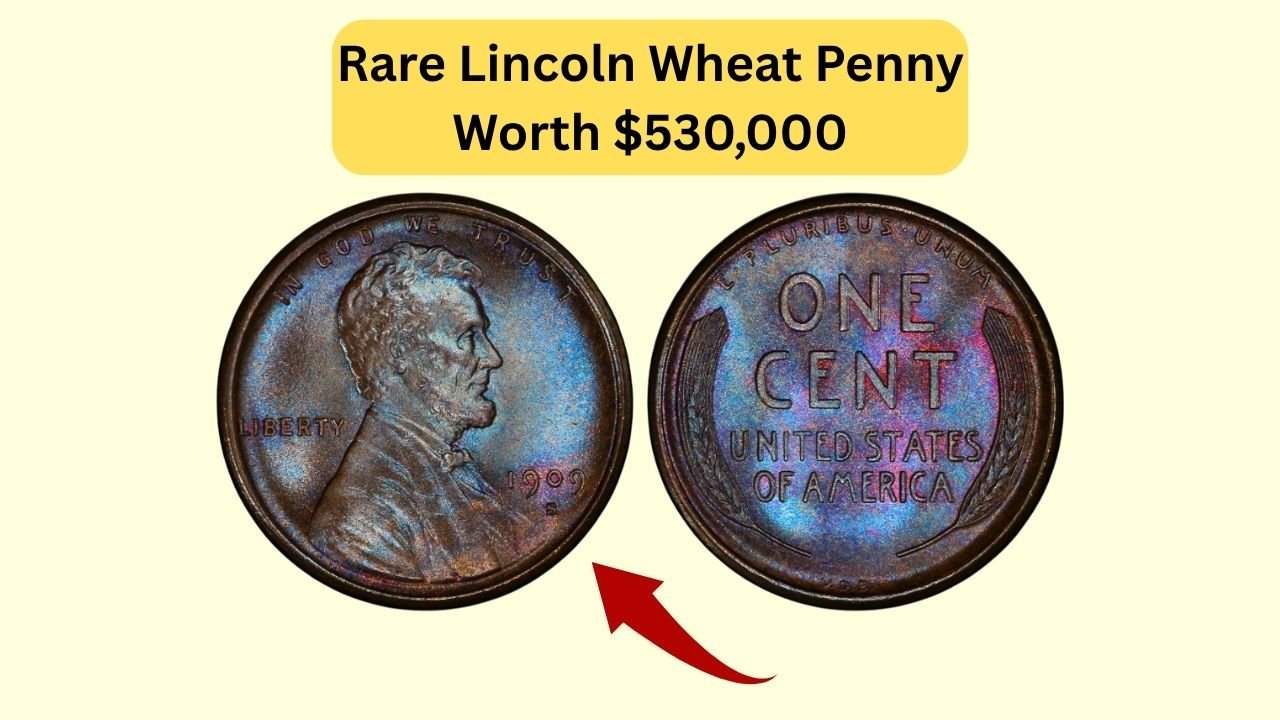A tiny piece of history might be hiding in your loose change. The Lincoln Wheat Penny, first minted in 1909, is one of the most iconic coins in American history. While most of these pennies are worth just one cent, a rare few are valued at staggering amounts, with one fetching up to $530,000 at auction. Amazingly, some of these valuable coins are still out there, waiting to be found in circulation. This article explores the story behind this penny, why it’s so valuable, and how you might spot one.
A Coin with a Rich History
The Lincoln Wheat Penny was created to honor Abraham Lincoln’s 100th birthday. Designed by Victor David Brenner, it was the first U.S. coin to feature a president’s portrait. The obverse shows Lincoln’s profile, while the reverse has two wheat stalks framing the words “ONE CENT.” Over the years, more than 20 billion were minted, making them a common sight. However, specific years and mint marks make certain pennies extremely rare and valuable to collectors.
Why Some Pennies Are Worth a Fortune
The value of a Lincoln Wheat Penny depends on its year, mint mark, and condition. The most sought-after is the 1909-S VDB penny, minted in San Francisco with Brenner’s initials (VDB) on the reverse. Only 484,000 were produced before the initials were removed, making it incredibly rare. In 2019, a top-condition 1909-S VDB sold for $530,000 at auction. Other rare varieties include the 1914-D and 1922 “No D” pennies, which can fetch tens of thousands of dollars.
| Year | Mint Mark | Estimated Value (High Grade) |
|---|---|---|
| 1909 | S VDB | Up to $530,000 |
| 1914 | D | Up to $150,000 |
| 1922 | No D | Up to $50,000 |
How to Spot a Valuable Penny
Finding a rare Lincoln Wheat Penny requires a keen eye. Check the year and mint mark, located below the date (S for San Francisco, D for Denver, or no mark for Philadelphia). The 1909-S VDB is the holy grail, but look for other key dates like 1914-D or 1922 with a faint or missing mint mark. Condition matters too—coins with sharp details and minimal wear are worth more. A magnifying glass can help you inspect for the tiny VDB initials near the wheat stalks on the back.
- Look at the date and mint mark first.
- Check for the VDB initials on 1909 pennies.
- Examine the coin’s condition for wear or damage.
- Compare with online guides or consult a coin expert.
Still Out There in Circulation
Believe it or not, some of these valuable pennies are still in circulation. People often overlook old coins in their change, and many don’t realize their worth. Stories exist of lucky finders discovering rare pennies in pocket change or inherited collections. Coin experts estimate thousands of rare Wheat Pennies remain undiscovered, sitting in jars, drawers, or even vending machines. Checking your change could lead to a surprising windfall.
Tips for Collectors and Treasure Hunters
If you want to hunt for these pennies, start with loose change or buy rolls of pennies from banks to search through. Coin shops and online marketplaces also sell Wheat Pennies, but beware of fakes—always verify authenticity with a professional. For those serious about collecting, joining a numismatic society or reading guides like the “Red Book” can deepen your knowledge. Even if you don’t find a $530,000 penny, collecting Wheat Pennies is a fun way to connect with history.
The Lincoln Wheat Penny proves that small things can hold immense value. With a bit of luck and a sharp eye, you might uncover a treasure in your pocket. So, next time you get change, take a closer look—you never know when a humble penny could be worth a fortune.
